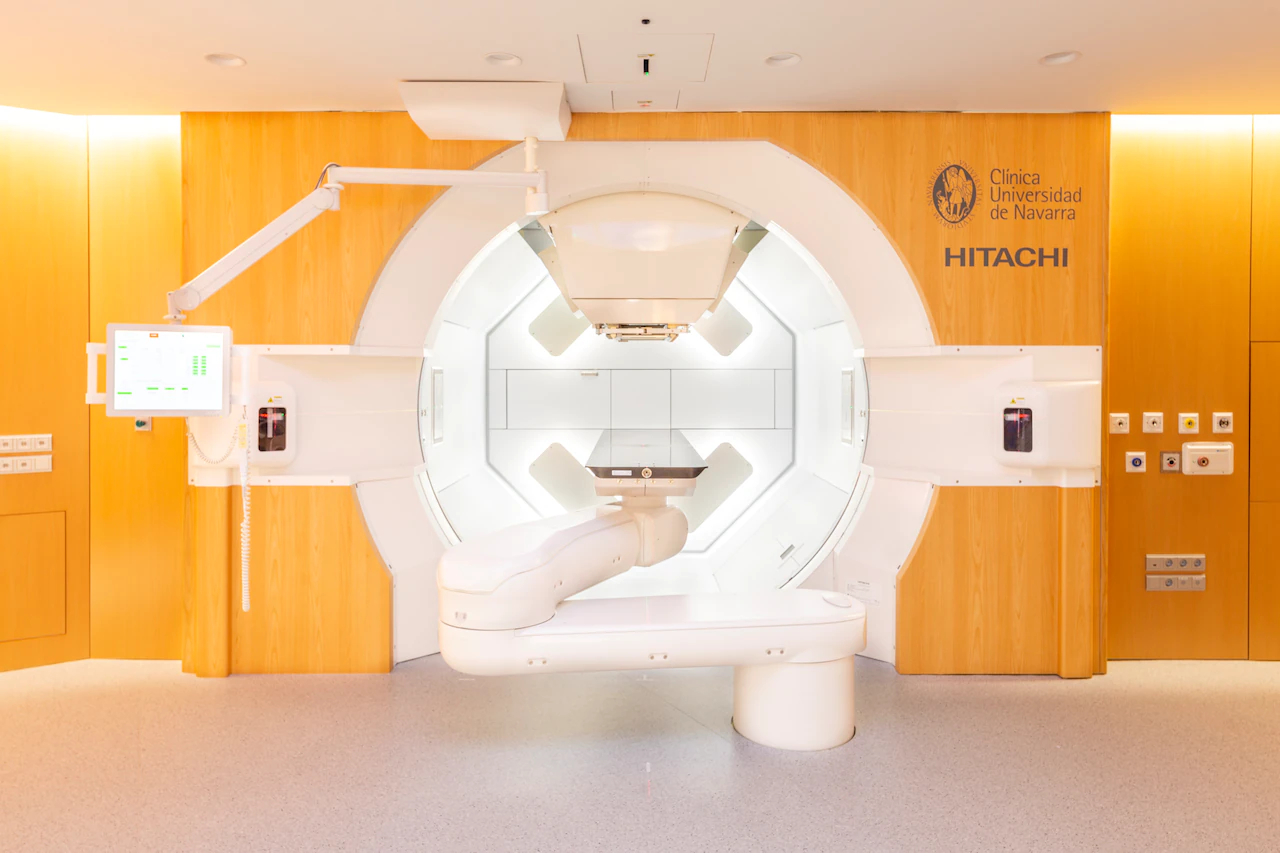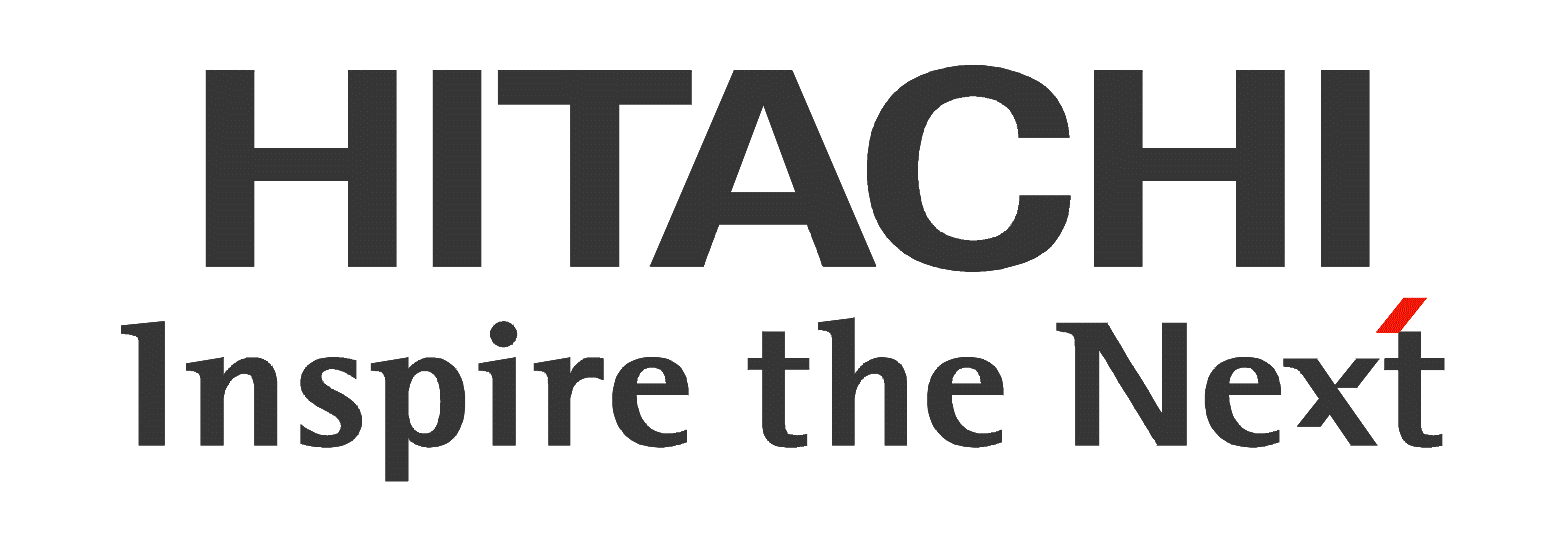The Promise of Cutting-Edge Cancer Treatment From Hitachi
The ability to treat cancer in a more effective, less invasive way has been in development for decades. Using advanced technology, Hitachi is expanding access to a treatment that is proving successful worldwide.
In 2020, one of the world’s leading private hospitals, Spain’s Clínica Universidad de Navarra, unveiled one of the most advanced proton therapy units in Europe at its headquarters in Madrid.
“PBT [Proton Beam Therapy] represents a great clinical advance,” says Dr. Felipe Calvo, Scientific Director of the Proton Therapy Unit at Clínica Universidad de Navarra. “Proton therapy is one of the most precise external radiotherapy technologies available. It allows for precise distribution and accurate dosing. It ensures that surrounding tissues are not irradiated unnecessarily while minimizing radiation-induced risks, especially secondary tumors.”
Although cancer survival rates have improved greatly over the past 30 years along with advances in chemotherapy and radiation treatments, the side effects of these therapies can be severe, damaging healthy cells as well as killing tumors. PBT is a form of radiotherapy that targets cancerous cells with pinpoint accuracy, causing minimal harm to surrounding tissues. It is often the preferred cancer treatment for children as it is pain-free and minimizes adverse effects on growing organs, as well as the potential to cause long-term disability.
The PBT system at Clínica Universidad de Navarra was designed, built and installed by Hitachi, which has pioneered PBT technology for the past 20 years and is a leading producer of proton therapy systems. The company is supplying leading clinics worldwide with its systems, which have treated more than 60,000 patients. The system installed at Clínica Universidad de Navarra is Hitachi’s first PBT foray into Europe, and it plans to add more.
“Our experience has been very positive,” says Calvo. “We have been able to treat many patients in a really beneficial way. Our equipment makes the daily treatment very easy for technicians and for doctors. The robustness of the system has allowed us to treat patients in a continuous and very predictable manner.”

PBT Explained
Traditional radiation therapy works by firing photons or high energy from X-rays at a tumor. These unload their deadly energy when they reach the cancer cells, killing them or slowing their growth by damaging their DNA. However, as they enter and leave the body, X-rays can also damage normal cells and organs. And, since they are not tightly focused, they can harm cells adjacent to the tumor.
PBT avoids these damaging effects. Using beams of protons fired at 60% of the speed of light, PBT delivers the majority of its energy directly to the tumor. Because of the physical properties of the proton beam, only very small amounts of energy are released as the beam enters the body. Once the beam reaches its target, it delivers the majority of its tumor-destroying energy and stops without penetrating further into the body. This minimizes collateral damage to the patient’s cells and organs.
At the heart of the PBT system is a particle accelerator, known as a synchrotron, which produces the proton beam with the exact energy required to treat each patient’s tumor. Hitachi has developed a compact version of the synchrotron for its PBT system.
Building a Worldwide Network of PBT Expertise
PBT, first proposed in the 1940s, has developed in leaps and bounds over the past 60 years. In 2001, Hitachi treated its first patient on a PBT system, at Japan’s Proton Medical Research Center at the University of Tsukuba. Today, Hitachi’s PBT technology is used in 31 hospitals across the world and now in Europe.
To foster expertise in particle therapy and discuss future technology roadmap, Hitachi holds an annual user meeting where clinicians and physicists from these facilities can meet and exchange knowledge.
“Hitachi has given us a worldwide networking opportunity with many of the best hospitals in the world, and the annual users’ meeting is a remarkable event,” says Gonzalo Lilly, Clínica Universidad de Navarra’s Director of Corporate Development.
“Combining cancer medicines and proton irradiation with other technologies that we are developing, like immunotherapy and advanced cell therapy, will give us the possibility to maintain our leadership in cancer treatment,” he says.
Hitachi’s Plan for a Sustainable Future
Hitachi is promoting PBT system worldwide as part of its contribution to health and well-being for all. Hitachi—through its business activities—is committed to helping achieve the United Nations Sustainable Development Goals (SDGs), a call to action designed to create a better, more sustainable future. The 17 SDGs cover areas such as saving the environment, reducing poverty and boosting healthcare.
SDG 3 outlines the ambition to “ensure healthy lives and promote well-being for all, at all ages.” Hitachi is using its expertise in medical innovation to help realize SDG3 through technology such as PBT, as well as by combining digital technologies with advanced analytics to create better treatments and care. Hitachi is making strides in helping to achieve the SDGs through its long-standing policy of Social Innovation.
“Hitachi is a technology company, and our Social Innovation Business is accumulating that technology and deploying it in a way that betters society,” says Kentaro Umei, General Manager, Particle Therapy Systems Division, Hitachi Europe. “We believe that a global shift in health care is required to create a next-generation system offering smart care. PBT makes a significant contribution to improving the treatment of many rare cancers and is helping people return quickly to their everyday lives after therapy. It is especially effective in improving cancer treatment for children. This is our Social Innovation in action.”
<